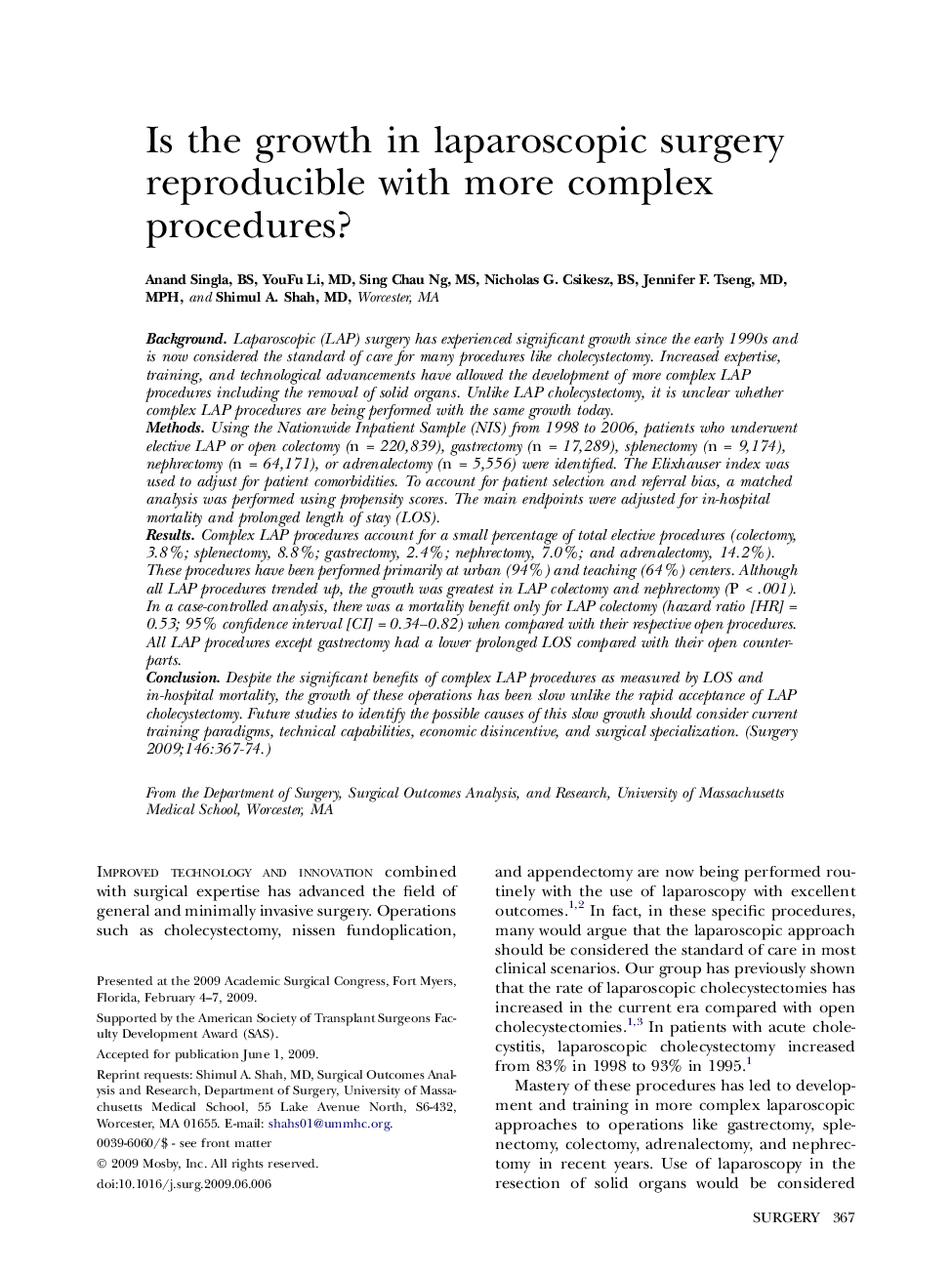| Article ID | Journal | Published Year | Pages | File Type |
|---|---|---|---|---|
| 4309405 | Surgery | 2009 | 8 Pages |
BackgroundLaparoscopic (LAP) surgery has experienced significant growth since the early 1990s and is now considered the standard of care for many procedures like cholecystectomy. Increased expertise, training, and technological advancements have allowed the development of more complex LAP procedures including the removal of solid organs. Unlike LAP cholecystectomy, it is unclear whether complex LAP procedures are being performed with the same growth today.MethodsUsing the Nationwide Inpatient Sample (NIS) from 1998 to 2006, patients who underwent elective LAP or open colectomy (n = 220,839), gastrectomy (n = 17,289), splenectomy (n = 9,174), nephrectomy (n = 64,171), or adrenalectomy (n = 5,556) were identified. The Elixhauser index was used to adjust for patient comorbidities. To account for patient selection and referral bias, a matched analysis was performed using propensity scores. The main endpoints were adjusted for in-hospital mortality and prolonged length of stay (LOS).ResultsComplex LAP procedures account for a small percentage of total elective procedures (colectomy, 3.8%; splenectomy, 8.8%; gastrectomy, 2.4%; nephrectomy, 7.0%; and adrenalectomy, 14.2%). These procedures have been performed primarily at urban (94%) and teaching (64%) centers. Although all LAP procedures trended up, the growth was greatest in LAP colectomy and nephrectomy (P < .001). In a case-controlled analysis, there was a mortality benefit only for LAP colectomy (hazard ratio [HR] = 0.53; 95% confidence interval [CI] = 0.34–0.82) when compared with their respective open procedures. All LAP procedures except gastrectomy had a lower prolonged LOS compared with their open counterparts.ConclusionDespite the significant benefits of complex LAP procedures as measured by LOS and in-hospital mortality, the growth of these operations has been slow unlike the rapid acceptance of LAP cholecystectomy. Future studies to identify the possible causes of this slow growth should consider current training paradigms, technical capabilities, economic disincentive, and surgical specialization.
